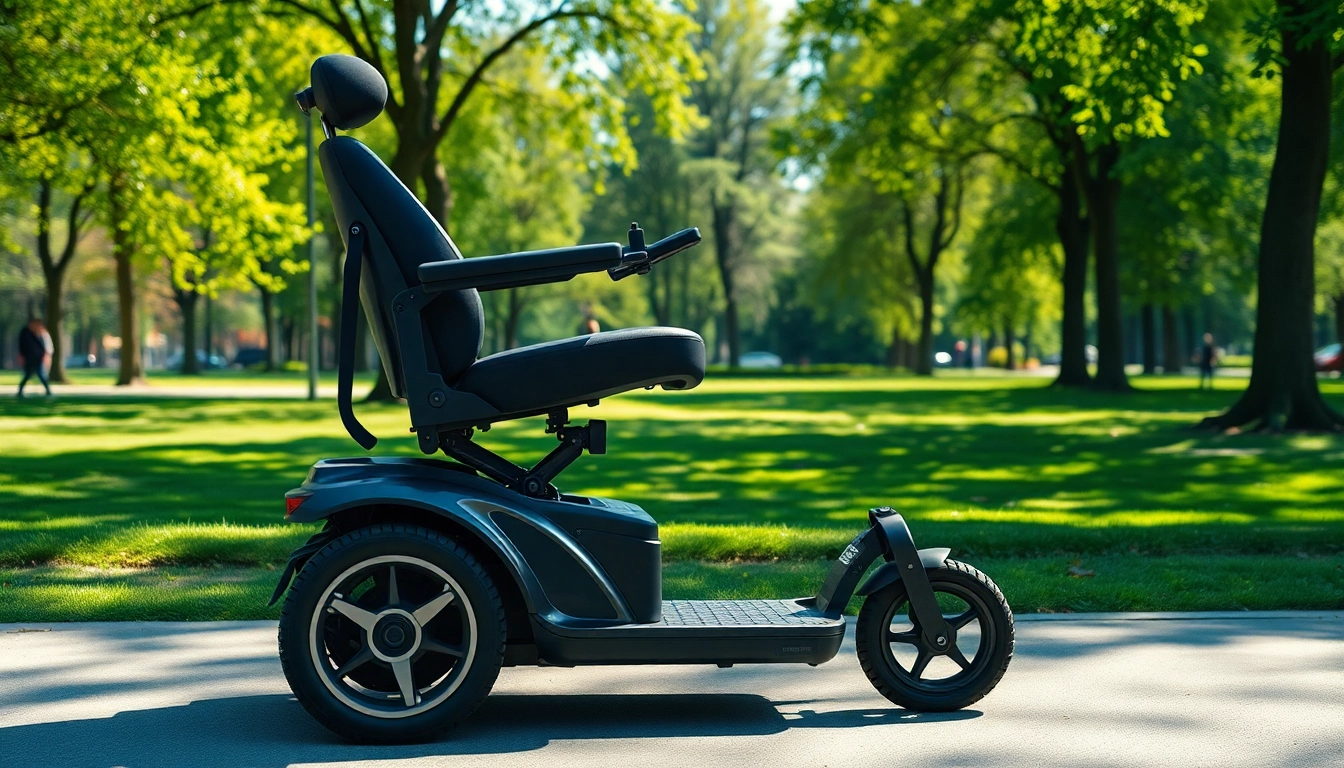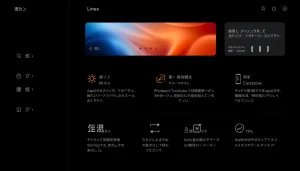Finding the Right Power Wheelchair: Key Features and Considerations for Users
Understanding Power Wheelchairs
In the world of mobility aids, power wheelchairs represent a significant advancement, providing freedom of movement for individuals with varying mobility impairments. These devices combine comfort, technology, and design to enhance the lives of their users. Navigating the market for power wheelchairs can be overwhelming due to the plethora of options available. In this comprehensive guide, we’ll explore everything you need to know about power wheelchairs.
What is a Power Wheelchair?
A power wheelchair, also known as an electric wheelchair, is a mobility device powered by batteries that allows users to navigate with ease and independence. Unlike traditional manual wheelchairs that require physical strength and effort to propel, power wheelchairs are equipped with electric motors that allow users to move effortlessly. They are often controlled using a joystick or a touchpad that enables fine motor control, making them an excellent choice for individuals with limited upper body strength.
Key Features of Power Wheelchairs
Understanding the key features of power wheelchairs is essential for choosing the right model to suit individual needs. Here are some notable features:
- Electric Drive System: Most power wheelchairs feature a sophisticated drive system that ensures smooth operation over various terrains.
- Adjustable Seating: Many models offer seating that can be customized for comfort, including adjustable heights, depths, and backrests.
- Battery Life and Range: A robust battery allows for longer use between charges, commonly providing a range of 15 to 30 miles depending on model and terrain.
- Weight Capacity: Different models cater to different users, with weight capacities that usually range from 250 lbs to over 400 lbs.
- Control Options: Beyond standard joystick controls, advanced power wheelchairs may offer alternative controls including sip and puff systems or head arrays for users with a heightened need for customization.
Types of Power Wheelchairs Available
The market offers various types of power wheelchairs, each designed to cater to specific needs. Here are the main categories:
- Standard Power Wheelchairs: These are built for general use and provide reliable mobility for indoor and outdoor settings.
- Heavy-Duty Power Wheelchairs: Ideal for larger individuals or those needing extra support, these wheelchairs offer enhanced durability and weight capacity.
- Folder Power Wheelchairs: Lightweight and portable models that can be easily folded and transported, perfect for travel.
- All-Terrain Power Wheelchairs: Equipped with rugged wheels and sturdier frames, these can navigate rough terrains and ramps.
- Standing Power Wheelchairs: These innovative models allow users to transition from sitting to standing positions for increased independence and varied daily activities.
Choosing the Right Power Wheelchair for Your Needs
Choosing the right power wheelchair involves careful consideration of personal needs and preferences. Below are essential factors to evaluate when making this decision.
Assessing Your Mobility Requirements
Understanding your mobility requirements is the first step in selecting an appropriate power wheelchair. Consider the following:
- Usage Context: Will the wheelchair primarily be used indoors or outdoors? Indoor models tend to be more maneuverable in tight spaces, while outdoor models may have larger wheels for better stability on uneven surfaces.
- Physical Condition: Assess physical limitations and strength, as well as any support needs.
- Daily Activities: Consider how much time will be spent in the wheelchair and what activities are to be accomplished.
- Space and Storage: Analyze living spaces to determine how well a power wheelchair would fit and whether there are suitable storage options.
Top Brands and Models to Consider
Several well-established brands offer high-quality power wheelchairs. Some popular names include:
- Pride Mobility: Known for user-friendly designs and a wide array of models, Pride is one of the leading brands in the industry.
- Permobil: Offers innovative solutions with advanced technology, particularly known for its customizable seating systems.
- Invacare: A trusted name in mobility solutions, providing durable and well-engineered wheelchairs with comprehensive options.
- Sunrise Medical: Combines functionality with sleek design and innovative technology.
Budgeting for Your Power Wheelchair
Beneath the functionality and features of power wheelchairs lies the consideration of financial investment. Here is how to approach budgeting:
- Understand Price Ranges: Basic models can start around $1,500, while more advanced and specialized models can surpass $30,000.
- Insurance Coverage: It’s advisable to check if health insurance or Medicare covers any part of the cost. Certain medical evaluations may be needed for insurance eligibility.
- Consider Maintenance Costs: Factor in potential ongoing costs such as battery replacements and repairs, which may vary significantly based on usage.
- Look for Grants and Assistance Programs: Many organizations offer financial assistance or grants to help cover mobility aid costs.
Benefits of Using a Power Wheelchair
Adopting a power wheelchair can have transformative effects on the lives of users. Here are some benefits to consider:
Enhancing Mobility and Independence
One of the most significant advantages of power wheelchairs is the increased mobility and independence they provide. Users can navigate various environments with little assistance, enabling them to participate actively in social activities, work, and leisure without relying on caregivers for mobility. This newfound independence allows individuals to reclaim their daily activities and routines.
Improving Quality of Life
The ability to move freely often translates into a better quality of life. Power wheelchairs allow users to engage more in community activities, maintain social connections, and have spontaneous experiences—essential for emotional well-being. Furthermore, personalized features cater to individual preferences and needs, ensuring a more comfortable experience.
Best Practices for Using Power Wheelchairs
To maximize the benefits of a power wheelchair, following best practices is crucial. Here are several tips:
- Proper Training: Ensure users are sufficiently trained to operate the joystick or alternative controllers, including understanding how to navigate various terrains and environments.
- Regular Usage: Consistent use can facilitate better adaptation and enhance user confidence.
- Environment Awareness: Be mindful of surroundings, avoiding obstacles and identifying potential hazards in both indoor and outdoor settings.
- Routine Maintenance: Develop a maintenance routine to keep the wheelchair in top condition, as failure to do so can lead to safety issues and increased repair costs.
Maintaining Your Power Wheelchair
To ensure longevity and optimal performance, regular maintenance of a power wheelchair is essential. Here are key aspects of maintenance:
Routine Maintenance Tips
Implementing a regular maintenance schedule can greatly extend the life of a power wheelchair. Here are essential tips:
- Inspect Tires and Wheels: Regularly check the tires for wear and ensure that they are adequately inflated for optimal performance.
- Battery Health Check: Periodically check the battery for signs of wear, and ensure that it retains a charge to prevent unexpected downtime.
- Cleaning: Keep the wheelchair clean and free from debris, which can hinder mobility and may damage components over time.
- Connections and Controls: Inspect wiring and connections periodically to ensure they are functioning correctly and look for any loose components.
Where to Get Repairs and Service
Even with good maintenance, power wheelchairs may occasionally require service or repairs. Users should consider the following:
- Authorized Dealers: Always connect with authorized retailers or manufacturers to ensure that repairs use genuine parts.
- Mobile Repair Services: Some technicians offer mobile services that can come to the user’s location, saving time and effort.
- Warranty Services: Review the warranty terms to understand what is covered and how to obtain service under warranty.
Upgrading Your Power Wheelchair
As technology advances, users may consider upgrading their power wheelchairs to include the latest features or improvements. Key factors to assess include:
- Technology Advances: Newer models may offer enhanced safety features, improved battery life, or more advanced control systems.
- Comfort: Upgrades can provide additional comfort features such as better seating and suspension systems tailored to the user’s physical needs.
- Integration with Smart Technology: Some models may incorporate smart technology that can enhance user experiences, allowing for easy integration with smartphones and other devices.
Real User Experiences with Power Wheelchairs
A deeper understanding of power wheelchairs includes insights from users who have experienced their benefits and challenges firsthand. Here’s a closer look:
Testimonials and Case Studies
Gathering testimonials from users reveals real-world perspectives on power wheelchairs. Many expressed that power wheelchairs transformed their lives, emphasizing increased mobility and independence. For instance, an individual named Peter shared his experience of regaining the ability to participate in family outings. His power wheelchair allowed him to join in activities that once seemed impossible. Testimonials like Peter’s underline the importance of evaluating personal mobility needs and matching them with the right power wheelchair.
Common Challenges Users Face
While power wheelchairs offer many benefits, users may face challenges, including:
- Learning Curve: New users may experience difficulty adapting to the controls initially.
- Access Barriers: Some environments may not be fully accessible, posing challenges for navigation.
- Maintenance Understanding: Users often require guidance to understand proper maintenance practices and troubleshooting.
Community Support and Resources
Support from community resources can play a crucial role in helping users adjust to their power wheelchairs and overcome challenges. Some valuable sources include:
- Online Forums and Social Media Groups: These platforms offer spaces for users to share experiences, tips, and resources.
- Local Support Groups: Many communities host support groups or meet-ups for individuals with mobility impairments, fostering connections and shared experiences.
- Occupational Therapists: Consulting OT professionals can provide invaluable advice on using power wheelchairs effectively and safely.








Post Comment